Celebrating 50 Years Of PLATO
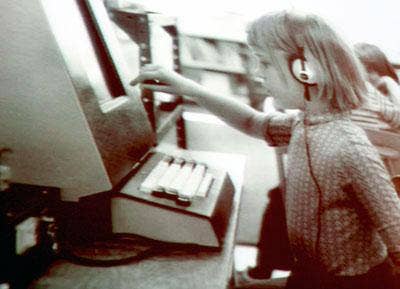
Educating An Industry
Several hundred alumni of the groundbreaking PLATO program for computer-assisted learning turned up at the Computer History Museum this week to celebrate the 50th anniversary of PLATO. Originated at the University of Illinois at Urbana-Champaign in 1960, PLATO spawned touch-sensitive, gas-plasma flat-panel displays, precursors of many of today’s most popular social networking applications, a cohort of some of the greatest programmers in computing history, and much more.
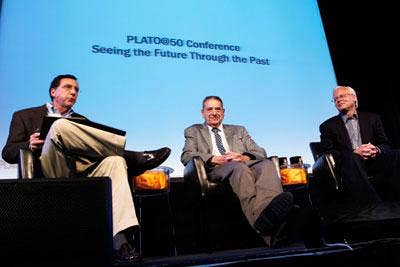
Pioneering Panel
The PLATO@50 event at the Computer History Museum in Mountain View, Calif. was highlighted by a panel featuring PLATO project director Donald Bitzer, (center), one of PLATO’s most famous alums; Microsoft chief software architect Ray Ozzie, (right); and moderated by John Markoff of The New York Times.
Photo by Kim Kulish
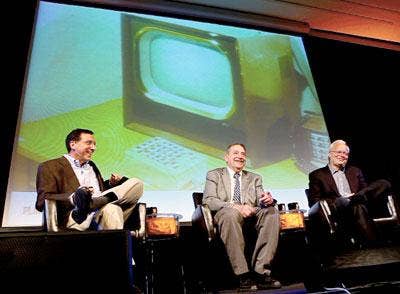
Display Of Brilliance
Donald Bitzer, (center), headed the PLATO program at the University of Illinois’ Computer-based Education Research Laboratory (CERL) and after PLATO’s commercialization by the Control Data Corporation in 1976. Bitzer was also the co-inventor with Gene Slottow and Robert Wilson of the plasma display, demonstrating a 1-inch-by-1-inch plasma panel prototype in 1967. Prior to that, PLATO’s user interface was displayed through audio-disabled televisions like the one pictured, first running on the university’s ILLIAC I mainframe and by the time of PLATO III, on CDC 1604 computer.
Photo by Kim Kulish

Innovation Station
Just a few of the innovations that emerged from the PLATO project under the watch of Donald Bitzer, (left), included the plasma display with its iconic orange glow, one of the earliest computer time-sharing systems for student instruction on PLATO’s computer terminals, Paul Tenczar’s TUTOR programming language, the first multi-user chat room application, Talk-o-matic, the TERM-talk instant messaging system, early e-mail called Personal Notes, and of course, games like the influential fantasy game Avatar and Airfight, a direct precursor to Microsoft’s Flight Simulator.
Photo by Kim Kulish
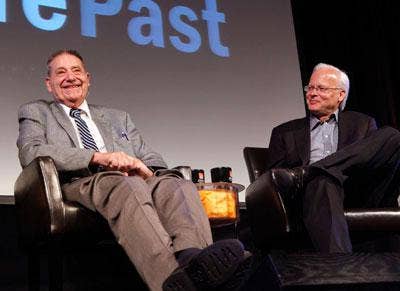
Passing The Torch
If Donald Bitzer, (left), was perhaps PLATO’s most accomplished hardware technologist, Ray Ozzie, (right), of Lotus Notes and Microsoft fame may be the project’s most renowned software developer. Here, the two reminisce about PLATO in the 1970s, when the computer-assisted learning system reached the height of its scope and influence. Ozzie worked with PLATO at the University of Illinois at Urbana-Champaign, graduating with a bachelor’s degree in computer science in 1979.
Photo by Kim Kulish
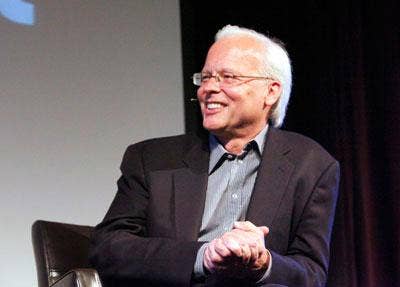
Seeds Of Greatness
Ray Ozzie, now chief software architect at Microsoft, cut his programming teeth on the PLATO system at the University of Illinois in the 1970s. He went on to work at Data General Corporation and also had stints at VisiCalc developer Software Arts and IBM. Prior to joining Microsoft following the software giant’s 2005 acquisition of Ozzie’s company Groove Networks, he was instrumental in the development of Lotus Symphony for Lotus Development and later Lotus Notes at another self-founded company, Iris Associates.
Photo by Kim Kulish
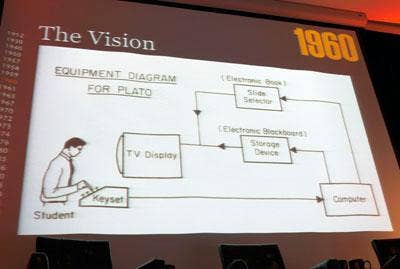
Blueprint For Learning
PLATO sprung from University of Illinois physicist Chalmers Sherwin’s idea to develop a computer-aided system for education in 1959. The following year, Donald Bitzer was recruited to head up the effort, which became known as the Programmed Logic for Automated Teaching Operations or PLATO project. The eventual invention of the plasma display for PLATO was the result of Bitzer and his colleagues’ decision that a graphical user interface was crucial to instructional computing. But the exorbitant cost of video memory -- around $2 per bit -- in the early 1960s meant they had to invent a cheaper way to deliver their GUI.
Photo by Kim Kulish
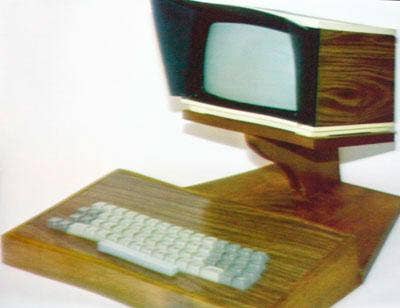
A Decade Of Teaching
The PLATO III terminal, pictured here, replaced the PLATO II in 1963 and went on to fuel the project’s expansion for nearly a decade before being succeeded by the PLATO IV in 1972. During its run, 1,600 hours of course material were developed on PLATO III and the wood-paneled terminals had accrued a cumulative total of 154,000 student contact hours since 1963.
Photo by Kim Kulish
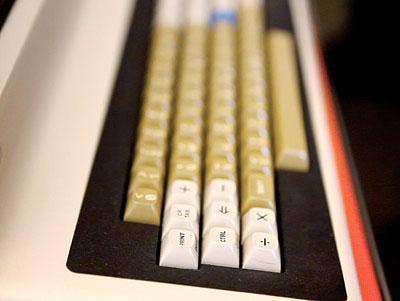
Key To The Information Highway
After the transition to plasma displays, PLATO keyboards had just 16 keys due to those early panels’ 16x16 pixel limitations. But by 1971, full 512x512-pixel flat-panel gas plasma displays were being manufactured by Owens-Illinois, and full-sized keyboards like this one on display at the PLATO@50 event were made possible.
Photo by Kim Kulish
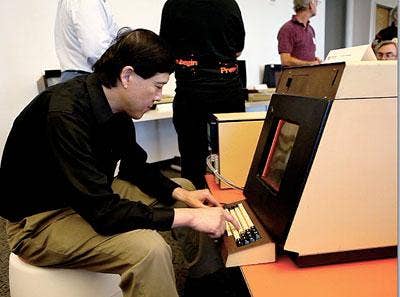
Birth Of A Network
A PLATO@50 attendee has a go on a PLATO IV learning station in the PLATO Playground section at the Computer History Museum. The community that worked and played together via the PLATO IV’s distinctively orange-colored display gave rise to what some believe to be the very first large-scale social network, a host of early applications like chat and e-mail that are still with us today, and of course, lots and lots of computer games.
Photo by Kim Kulish